3d Printing Landscape

Table of Contents
3D Printing Landscape: A Comprehensive Overview of Technologies, Applications, and Future Trends
The 3D printing landscape is rapidly evolving, transforming industries and opening up unprecedented possibilities. This comprehensive guide explores the current state of 3D printing, delving into various technologies, diverse applications, and exciting future trends shaping this dynamic field.
Understanding the 3D Printing Technologies
Several 3D printing technologies, also known as additive manufacturing, exist, each with its strengths and weaknesses. Choosing the right technology depends heavily on the desired outcome, material properties, and budget.
1. Fused Deposition Modeling (FDM):
- Mechanism: Melts thermoplastic filament and extrudes it layer by layer to build the 3D object.
- Pros: Affordable, relatively easy to use, versatile with various filament materials.
- Cons: Lower resolution than other methods, susceptible to warping and layer lines.
- Best for: Prototyping, hobbyist projects, educational purposes, and low-volume production of simple parts.
2. Stereolithography (SLA):
- Mechanism: Uses a UV laser to cure liquid photopolymer resin, solidifying it layer by layer.
- Pros: High resolution, smooth surface finish, accurate details.
- Cons: More expensive than FDM, requires post-processing (washing and curing), limited material choices.
- Best for: High-precision models, jewelry, dental applications, and intricate prototypes.
3. Selective Laser Sintering (SLS):
- Mechanism: Uses a laser to fuse powdered material (plastic, metal, ceramic) layer by layer.
- Pros: Strong and durable parts, ability to create complex geometries, wide range of materials.
- Cons: Expensive, requires post-processing, slower than other methods.
- Best for: Functional prototypes, tooling, medical implants, and high-strength components.
4. Digital Light Processing (DLP):
- Mechanism: Uses a projector to cure liquid resin, enabling faster printing speeds than SLA.
- Pros: High resolution, fast printing speed, good for mass production of small parts.
- Cons: Can be more expensive than FDM, requires post-processing.
- Best for: High-detail models, small-batch production, dental applications.
Expanding Applications of 3D Printing
The versatility of 3D printing has led to its adoption across various sectors.
1. Healthcare:
Personalized medicine: Creating custom prosthetics, implants, and surgical tools. Drug discovery: Developing and testing new drug delivery systems. Patient-specific models: Generating 3D anatomical models for surgical planning.
2. Manufacturing:
Prototyping: Rapid prototyping and iterative design. Tooling: Creating custom tools and fixtures. Mass customization: Producing personalized products on demand. On-demand manufacturing: Reducing inventory costs and lead times.
3. Aerospace:
Lightweight components: Designing and producing lightweight parts for aircraft and spacecraft. Complex geometries: Manufacturing intricate components with complex internal structures. Rapid prototyping: Accelerating the development of new aerospace technologies.
4. Automotive:
Custom parts: Producing customized car parts and accessories. Tooling and fixtures: Creating specialized tools for the automotive manufacturing process. Rapid prototyping: Developing and testing new automotive designs.
5. Architecture and Construction:
Building models: Creating scale models of buildings and structures. Custom components: Producing unique architectural elements. Construction materials: Developing and testing new building materials.
Future Trends in the 3D Printing Industry
The future of 3D printing looks incredibly promising, with several key trends emerging:
- Bioprinting: Creating living tissues and organs.
- Multi-material printing: Combining different materials in a single print.
- Artificial intelligence (AI) integration: Utilizing AI to optimize the printing process and design new products.
- 4D printing: Printing objects that can change shape and function over time.
- Decentralized manufacturing: Expanding 3D printing capabilities to local communities and individuals.
Conclusion
The 3D printing landscape is a dynamic and rapidly evolving field with enormous potential. From its diverse technologies to its wide-ranging applications and exciting future trends, 3D printing is poised to revolutionize various industries and reshape the way we design, manufacture, and interact with the world around us. Further research and development will continue to push the boundaries of this transformative technology, leading to even more innovative applications and solutions in the years to come.

Thank you for visiting our website wich cover about 3d Printing Landscape. We hope the information provided has been useful to you. Feel free to contact us if you have any questions or need further assistance. See you next time and dont miss to bookmark.
Featured Posts
-
Landscaping Culpeper Va
Feb 06, 2025
-
Laminate Bathroom Cabinets
Feb 06, 2025
-
Jack And Jill Bathroom Floor Plans
Feb 06, 2025
-
Grylls And Holly Kind Words On Set
Feb 06, 2025
-
Patio Summer
Feb 06, 2025